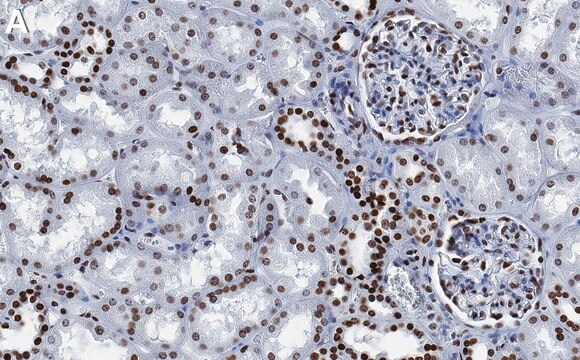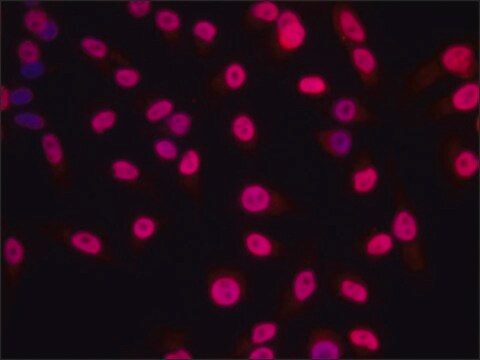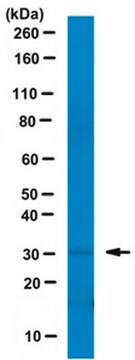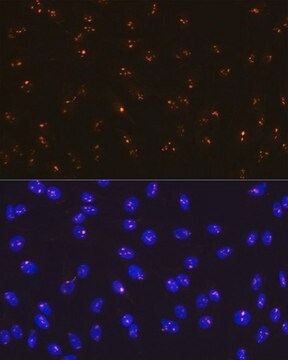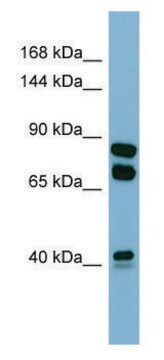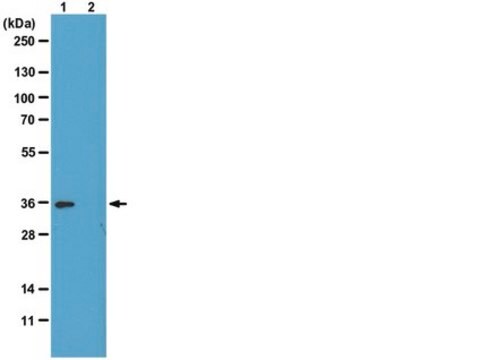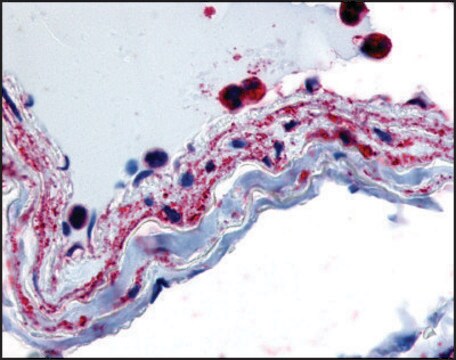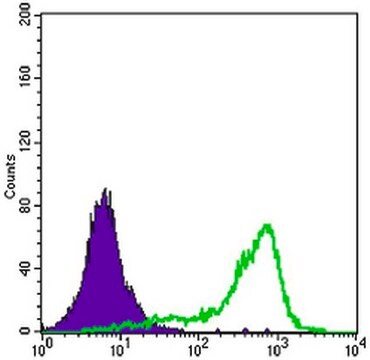MABE1885
Anti-Histone H1 Antibody, clone 1G6
clone 1G6, from mouse
Synonyme(s) :
H1
About This Item
Produits recommandés
Source biologique
mouse
Forme d'anticorps
purified immunoglobulin
Type de produit anticorps
primary antibodies
Clone
1G6, monoclonal
Espèces réactives
Drosophila
Conditionnement
antibody small pack of 25 μg
Technique(s)
ChIP: suitable (ChIP-seq)
immunoprecipitation (IP): suitable
western blot: suitable
Isotype
IgG1κ
Numéro d'accès NCBI
Numéro d'accès UniProt
Modification post-traductionnelle de la cible
unmodified
Description générale
Spécificité
Immunogène
Application
Immunoprecipitation Analysis: A representative lot immunoprecipitated Histone H1 in Immunoprecipitation applications (Iwasaki, Y.W., et. al. (2016). Mol Cell. 63(3):408-19).
Chromatin Immunoprecipitation Analysis (ChIP): A representative lot immunoprecipitated Histone H1 in Chromatin Immunoprecipitation applications (Iwasaki, Y.W., et. al. (2016). Mol Cell. 63(3):408-19).
Qualité
Western Blotting Analysis: A 1:500 dilution of this antibody detected Histone H1 in Drosophila S2 cell lysate.
Description de la cible
Forme physique
Autres remarques
Vous ne trouvez pas le bon produit ?
Essayez notre Outil de sélection de produits.
Certificats d'analyse (COA)
Recherchez un Certificats d'analyse (COA) en saisissant le numéro de lot du produit. Les numéros de lot figurent sur l'étiquette du produit après les mots "Lot" ou "Batch".
Déjà en possession de ce produit ?
Retrouvez la documentation relative aux produits que vous avez récemment achetés dans la Bibliothèque de documents.
Notre équipe de scientifiques dispose d'une expérience dans tous les secteurs de la recherche, notamment en sciences de la vie, science des matériaux, synthèse chimique, chromatographie, analyse et dans de nombreux autres domaines..
Contacter notre Service technique